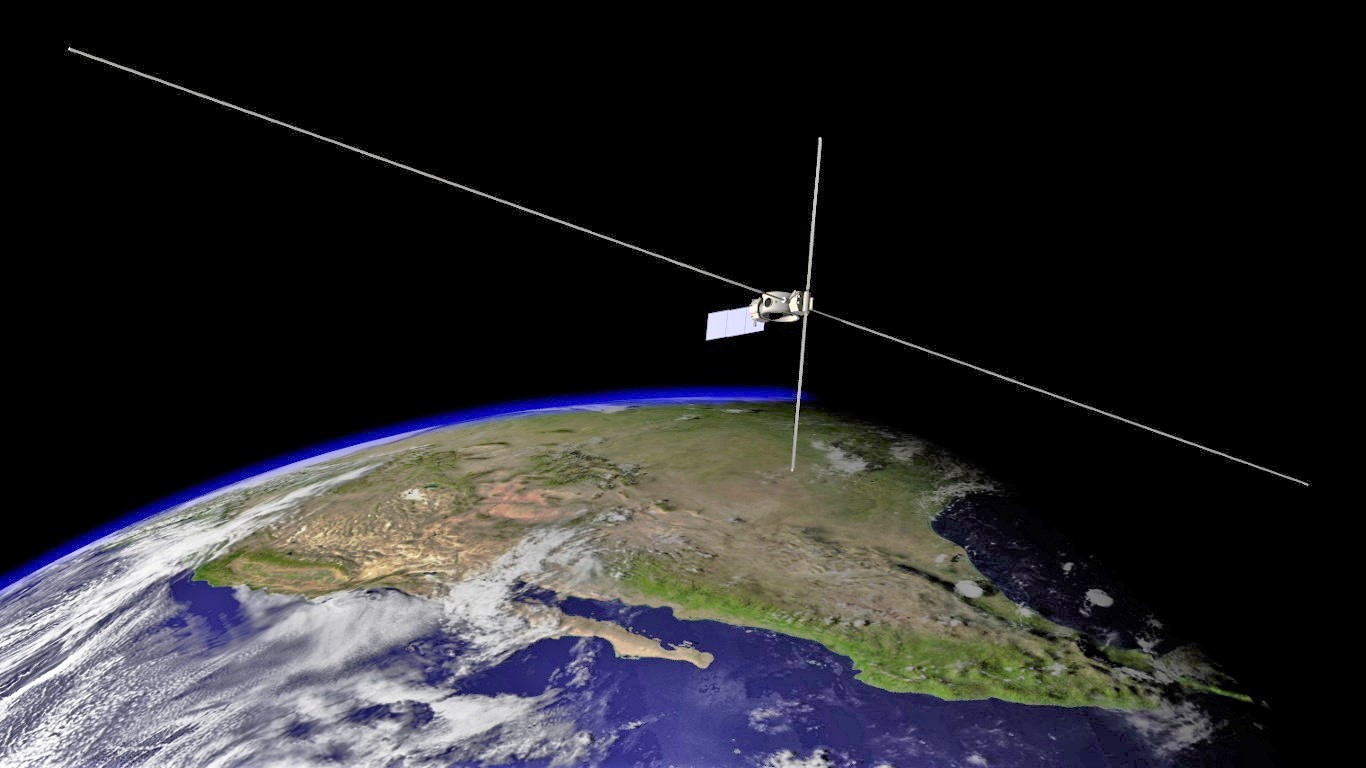AFRL Satellite Duo Probing Earth’s Radiation Belts
KIRTLAND AIR FORCE BASE, N.M. — The Air Force Research Laboratory’s (AFRL) Demonstration and Science Experiments (DSX) spacecraft continues its scientific investigations despite the COVID-19 pandemic that has impacted every aspect of life around the world.
DSX launched into a 6000 km by 12000 km orbit on June 25, 2019 aboard a SpaceX Falcon Heavy as part of the STP-2 mission sponsored by the DoD Space Test Program, with the primary mission to uncover the complex relationship between very low frequency (VLF) radio waves and the Earth’s radiation belts.
“DSX has been actively transmitting a variety of VLF signals to understand the performance of our transmitter and antenna,” says DSX Principal Investigator Dr. James McCollough. “We are very pleased with the quality of the payloads, and have been collecting a treasure trove of environmental measurements as well.”
DSX was joined on orbit in February 2020 by the Very Low Frequency Propagation Mapper (VPM), an AFRL-built small satellite designed to listen to radio transmissions from its larger sibling at large distances as it actively probes the response of radiation belt electrons to weak radio waves.
“Both missions have been performing well,” says Lt. Col. James Caldwell, Mission Director for both DSX and VPM. “We are very proud of our AFRL space experiment team for achieving several firsts on these missions. Our operations teams have found ways to safely navigate the unprecedented challenges posed during the pandemic.”
In addition to studying the dynamics of the Earth’s natural radiation belts, the two satellites are developing technologies to protect low earth orbiting spacecraft from the effects of high-altitude nuclear explosions.
“We learned in the late 50’s and early 60’s that putting a warhead on a missile and detonating it in space produces a long-lived, extremely intense belt of radiation in low earth orbit,” explains Dr. Michael Starks, who leads AFRL’s Radiation Belt Remediation (RBR) effort. “This radiation is deadly to unprotected satellites and an explosion in today’s on-orbit environment, intentional or otherwise, could cause grave damage to spacecraft that pass through it. We have been working for 15 years to develop technologies to harmlessly eliminate that radiation before it can wreak havoc.”
The DSX spacecraft is designed to test the performance of a space-based antenna at injecting radio waves that effectively wash out the nuclear radiation belts. Of course, there aren’t currently any nuclear belts to subject to the experiment, but the Earth’s natural radiation belts operate in the same way.
“DSX isn’t powerful enough to cause a significant change to the natural belts,” Dr. McCollough says. “But it does help validate our calculations of how an actual radiation belt remediation capability would perform.”
The DSX and VPM spacecraft are anticipated to continue their tandem experiment for about another six months.
“This is a great example of AFRL putting our deep expertise to work on long-standing difficult problems,” says Col. Eric Felt, Director of AFRL’s Space Vehicles Directorate. “This has been a long road for the RBR / DSX / VPM team. I’m excited to see their hard work and perseverance deliver a game-changing capability to our nation.”

Artist’s rendering of the Air Force Research Laboratory DSX spacecraft on-orbit with its 80-meter and 16-meter antenna booms extended. USAF rendering by W Robert Johnston
